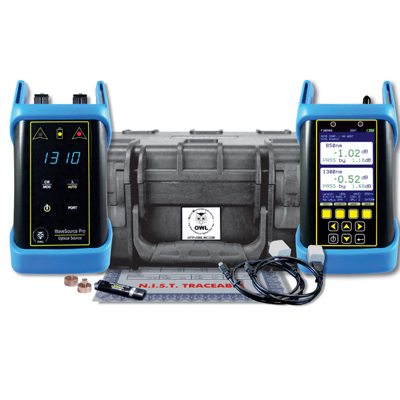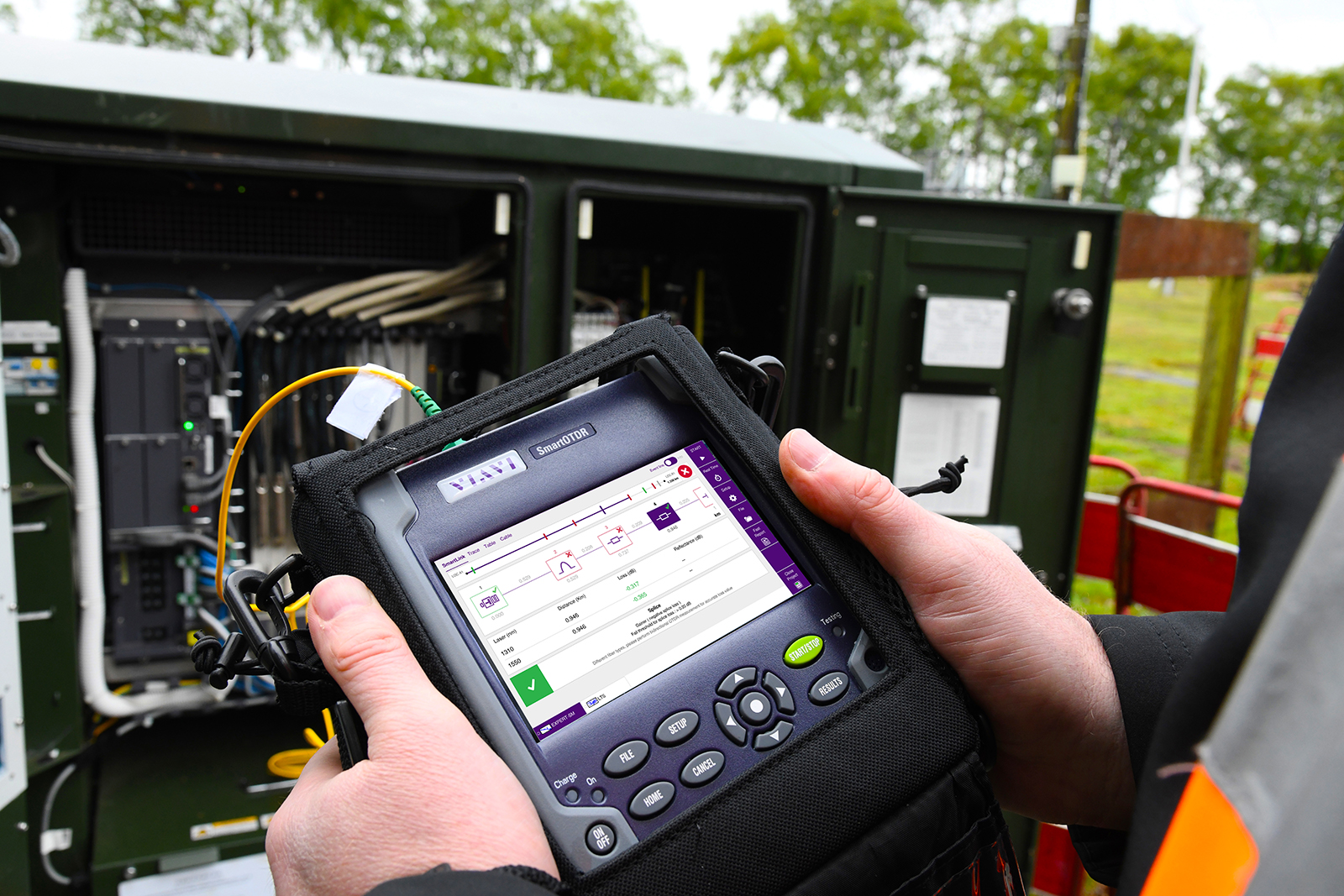Why fiber measurement is essential in textile industries
A Comprehensive Overview to Optical Measurement System for Fiber Evaluation
When it pertains to fiber analysis, understanding optical measurement systems is crucial for evaluating efficiency and guaranteeing high quality. You'll explore crucial techniques like interferometry and spectroscopy, which help you determine essential parameters. There's more to it than simply these methods; grasping attenuation dimension methods can considerably influence your network's performance. As you navigate through this overview, you'll reveal understandings that can transform your approach to fiber optics.
Comprehending Optical Measurement Equipments
When you check out optical dimension systems, you'll discover they're important for assessing fibers with accuracy. These systems use light to analyze numerous features of fibers, including diameter, refractive index, and harmony. By employing methods like interferometry and spectroscopy, you can gain useful insights into the fiber's properties.You'll discover that these systems are created to reduce mistakes and boost precision, making certain reliable data for your analysis. Different arrangements, such as single-mode and multi-mode systems, accommodate certain fiber types, enabling you to pick the finest suitable for your needs.Moreover, the integration of innovative software devices helps you interpret the information effectively, making it less complicated to identify any inconsistencies or problems. As you examine deeper into these dimension systems, you'll appreciate how they improve the logical procedure and enhance the overall top quality of fiber production and screening.
Secret Criteria for Fiber Analysis
Trick parameters for fiber analysis play a necessary duty in establishing the top quality and efficiency of optical fibers. When you examine a fiber, you'll intend to concentrate on features such as depletion, data transfer, and modal dispersion. Depletion gauges the loss of signal strength as light travels with the fiber. A lower depletion value suggests much better quality and longer transmission distances - fibre testing equipment.Bandwidth describes the data-carrying capability of the fiber and is important for high-speed communication. You'll require to examine the data transfer to guarantee it fulfills your application demands. Modal dispersion, which emerges from the different rates at which light trips via different settings in multimode fibers, impacts signal quality
Techniques for Attenuation Measurement

Bandwidth and Its Effect On Performance
Understanding bandwidth is crucial for enhancing fiber performance, as it directly influences the amount of data that can be sent over a network. Higher transmission capacity suggests you can send even more information all at once, enabling faster interaction and far better general performance. When you're collaborating with fiber optics, it's important to take right into account how bandwidth interacts with fiber characteristics, such as core dimension and product properties.If the data transfer is limited, you may experience information loss or slower speeds, affecting your applications. Additionally, different kinds of fibers can support differing data transfer levels, so it is essential to pick the appropriate fiber for your particular needs.You must also remember that ecological aspects, like temperature level and outside interference, can influence data transfer. By understanding these facets, you can make informed choices to boost your fiber optic systems, making certain reputable and efficient information transmission.
Refractive Index Measurement Techniques

Overall Internal Representation
Complete interior reflection (TIR) functions as a fundamental principle for measuring the refractive index of fibers. When light travels from a denser tool to a less dense one, it can only be completely mirrored if the angle of occurrence goes beyond a particular threshold, referred to as the crucial angle. This sensation enables you to establish the refractive index by evaluating the angles at which light reflects or refracts. By using a configuration that routes light right into a fiber and determines the resulting angles, you can calculate the refractive index precisely. Recognizing TIR not just enhances your fiber analysis yet additionally improves the design and efficiency of optical systems. So, leveraging TIR can lead to a lot more efficient fiber-based applications.
Interferometric Techniques
Structure on the concepts of overall internal representation, interferometric methods supply an effective means for determining the refractive index of fibers with high accuracy. These techniques make use of the interference patterns produced when light beams split and recombine after traveling different courses. You can use setups like the Michelson or Mach-Zehnder interferometer to analyze phase shifts caused by changes in refractive index. By thoroughly adjusting your system and analyzing the resulting edges, you can establish the refractive index with remarkable accuracy. It's important to keep secure ecological problems to decrease errors. With these strategies, you'll enhance your understanding of Extra resources fiber residential properties, leading to better performance in various applications, from telecoms to sensing unit innovation.
Modal Diffusion and Its Significance
Modal dispersion describes the dispersing of light pulses as they travel through a fiber, which can influence the overall performance of the system. You'll see that this phenomenon can bring about indicate distortion, affecting information transmission rates and quality. Recognizing its value is essential for optimizing fiber optic layouts.
Meaning of Modal Dispersion
In optical fiber communications, modal diffusion plays a considerable function in determining signal top quality and transmission speed. It happens when various light settings take a trip at varying speeds via the fiber. Since each setting has unique paths and attributes, they can come to the getting end at different times. This time difference can lead to signal spreading and distortion, which can break down the overall efficiency of the interaction system. You may experience modal dispersion mainly in multimode fibers, where the multiple paths of light exacerbate the problem. Understanding modal dispersion is crucial for maximizing fiber layouts and making sure that your interaction systems operate successfully, keeping the stability of the transmitted signals over longer distances.
Impacts on Fiber Performance
Understanding modal diffusion helps highlight its results on fiber performance. This phenomenon happens when different settings of light traveling at differing speeds within the fiber, Check Out Your URL resulting in signify dispersing in time. As you examine fiber optics, you'll observe that enhanced modal diffusion can substantially deteriorate signal quality, causing lowered transmission capacity and longer transmission ranges. In sensible terms, this implies your data can get here distorted or delayed, influencing total interaction efficiency. To reduce these results, you might take into consideration making use of single-mode fibers, which reduce modal dispersion. By choosing the best fiber type and comprehending how modal dispersion influences efficiency, you can enhance transmission quality and assurance reliable data transfer in your optical measurement systems.
Devices and Technologies for Optical Measurements
When it involves optical measurements, numerous innovative devices and modern technologies are at your disposal to boost fiber analysis. You'll find fiber optic testers, which analyze signal quality and performance, crucial for keeping optimal network effectiveness. Optical time-domain reflectometers (OTDRs) are critical for finding mistakes and gauging loss over ranges, offering detailed insights right into fiber stability. In addition, spectrometers can analyze light ranges, aiding you identify product properties and composition.Don' t overlook the my latest blog post value of imaging systems, like digital microscopic lens, that enable you to aesthetically examine fiber surface areas for defects. Think about making use of polarization analyzers to determine tension and stress in fibers, which is necessary for understanding their behavior under various problems. By leveraging these tools and modern technologies, you can greatly boost your fiber evaluation procedures, making sure integrity and high performance in your optical networks.
Frequently Asked Inquiries
What Are the Prices Related To Optical Measurement Solutions?
The expenses connected with optical measurement systems can vary considerably. You'll need to examine tools prices, upkeep fees, software program licenses, and possible training expenditures. Budgeting thoroughly will aid you avoid unexpected financial obstacles down the line.

Just How Frequently Should Fiber Analysis Be Carried Out?
You need to execute fiber analysis regularly, typically every 6 months or after substantial changes in the atmosphere (fibre testing equipment). This assures ideal efficiency and aids determine potential concerns before they influence your system's efficiency and reliability
Can Optical Measurement Equipments Be Adjusted in the house?
Yes, you can calibrate optical measurement systems in your home, however it needs accuracy. Ensure you comply with the supplier's standards, use appropriate calibration requirements, and ascertain your outcomes to assure precision in your dimensions.
What Industries Frequently Utilize Optical Measurement Equipments?
You'll find optical measurement systems widely made use of in sectors such as telecoms, manufacturing, medical care, and research study. They're vital for high quality control, fiber analysis, and making certain exact measurements in numerous applications, improving performance and precision across sectors.
Are There Any Kind Of Safety And Security Worry About Optical Measurement Systems?
Yes, there are safety and security worry about optical measurement systems. You need to constantly use safety glasses to secure your eyes from intense source of lights and assurance proper training to handle equipment securely and stay clear of accidents.